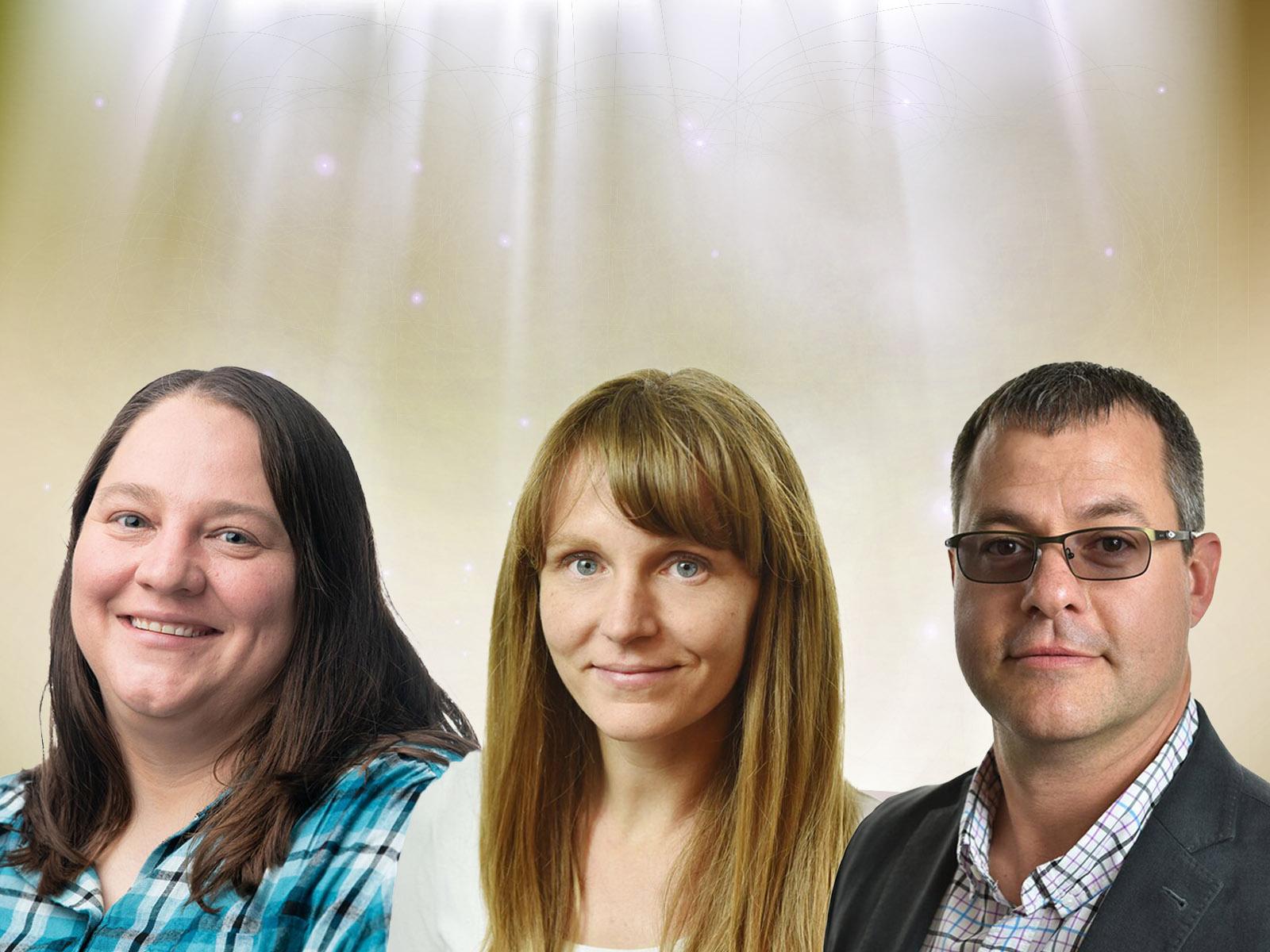Global Lipid Map Paper Selected for Top Honor
National Institute of Environmental Health Sciences selects 32 out of 3300 publications as Papers of the Year

Left to right: PNNL researchers Lisa Bramer, Jennifer Kyle, and Thomas Metz.
(Composite image by Shannon Colson | Pacific Northwest National Laboratory)
Three Pacific Northwest National Laboratory (PNNL) researchers, Jennifer Kyle, Lisa Bramer, and Thomas Metz, from the Biological Sciences Division of PNNL were part of a larger research team that focused their efforts in understanding the role of lipids in fueling the COVID-19 virus.
The findings became part of the 3300 publications supported by funding from the National Institute of Environmental Health Sciences (NIEHS) in 2022. The paper entitled “A global lipid map reveals host dependency factors conserved across SARS-CoV-2 variants” published in Nature Communications was chosen as one of 32 Papers of the Year—a top 1% honor for this competitive field.
The paper detailed observations wherein cutting off the fatty fuel source, stopped viral replication within 48 hours. According to a PNNL news release, the team embarked on the study based on observations that people with a high body-mass index and conditions like cardiovascular disease and diabetes are more sensitive to the disease.
“Lipids are an important part of every cell. They literally hold us together by keeping our cells intact, and they’re a major source of energy storage for our bodies,” said Jennifer Kyle, a biomedical scientist who specializes in the measurement of lipids. “They are an attractive target for a virus.”
Collaboration a Key Factor
Collaboration was an important part of this work, leveraging a connection between PNNL and Oregon Health & Science University (OHSU). According to biomedical scientist and paper author Thomas Metz, “This study is illustrative of the power of a multi-disciplinary team approach in revealing new knowledge on the replicative needs of SARS-CoV-2 and identifying associated therapeutic targets.”
Lisa Bramer, a data scientist, explained why an interdisciplinary team was important, “Having team members with expertise in studying viruses, measuring lipids, and conducting data analysis ensured a well-designed experiment with high-quality data allowing us to uncover and make sense of observed relationships in the data collected. Strong expertise in multiple scientific areas was essential to our ability to gain a more holistic understanding of how the virus interacts with the body.”
The research is the result of an ongoing collaboration between OHSU and PNNL. Four years ago the institutions launched a collaborative effort now known as the Pacific Northwest Biomedical Innovation Co-Laboratory, or PMedIC, bringing scientists and physicians together to merge basic science and clinical experience to explore disease dynamics and develop innovative therapies.
This paper is a representation of the work continuing to develop. PNNL computational biologist Bobbie-Jo Webb-Robertson and co-director of PmedIC talking about the work said, “performing such novel studies that utilizes the strengths of both institutions to gain mechanistic understanding of disease has the opportunity to identify novel therapeutic approaches to treating complex diseases, such as COVID-19.”
Published: February 1, 2023